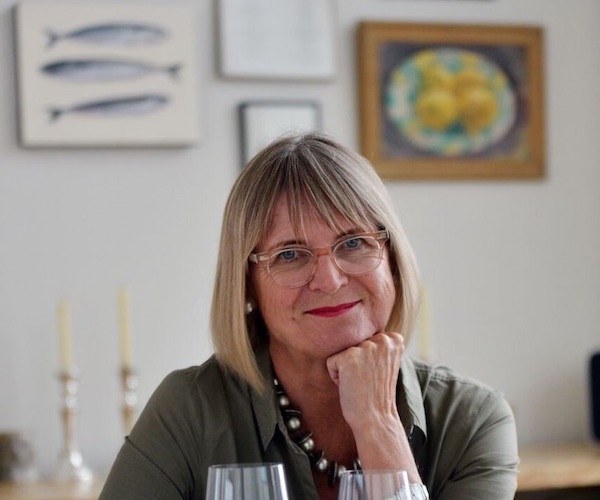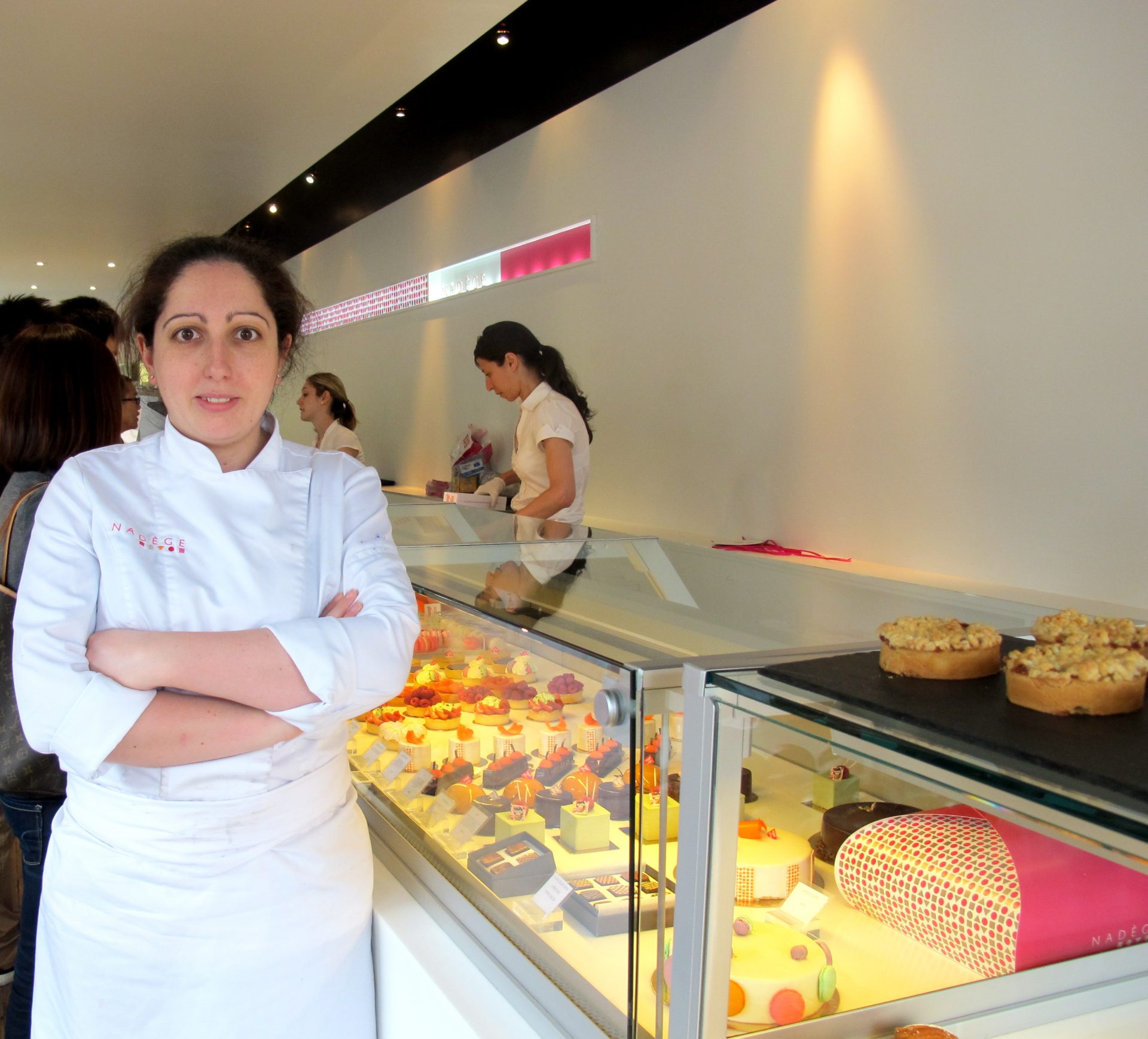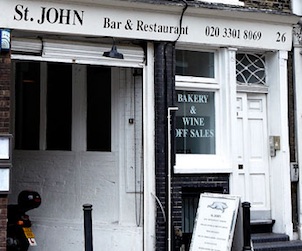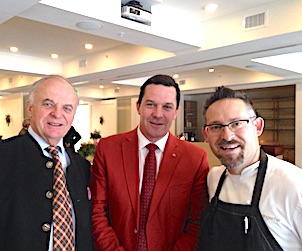Malcolm Jolley digs deep into the Gremolata Files and finds Jancis Robinson…
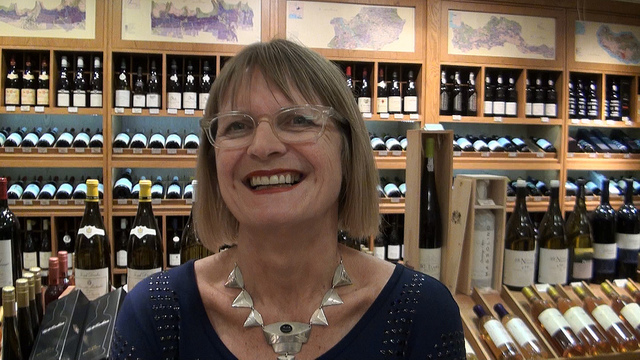
Jancis Robinson interviewed by Jamie Drummond in London, 2011 for Good Food Revolution.
Jancis Robinson, Officer of the Order of the British Empire and Master of Wine, was a commanding presence in the wine world in the fall of 2006 when I interviewed her for Gremolata. The occasion was the publication of the Third Edition of The Oxford Companion to Wine, and Robinson was on a book tour. If she attended any wine events when she was in Toronto then, I wasn’t invited. Instead we drank tea on a quiet corner of the lobby of her hotel, The Windsor Arms. With only a couple years of tasting and writing about wine behind me, I might just have known enough not to embarrass myself and be genuinely curious about her thoughts on the wine world. In any event she was gracious and friendly with me while answering my questions with deliberation and seriousness. The mid-2000’s were a turning point in world wine culture. In the wake of the film Mondovino (2004) the influence of Robert Parker seemed to be on the wane, and critics who championed lighter, less alcoholic, styles of wines were on the rise, with Robinson at the leading edge of the change. And Robinson was quickly pivoting from TV and books to the online world with the website that is now jancisrobinson.com. She was a star and was poised to rise even further. It was an exciting interview for me and deepened my curiosity about wine all the more.
JANCIS ROBINSON INTERVIEW | FALL 2006
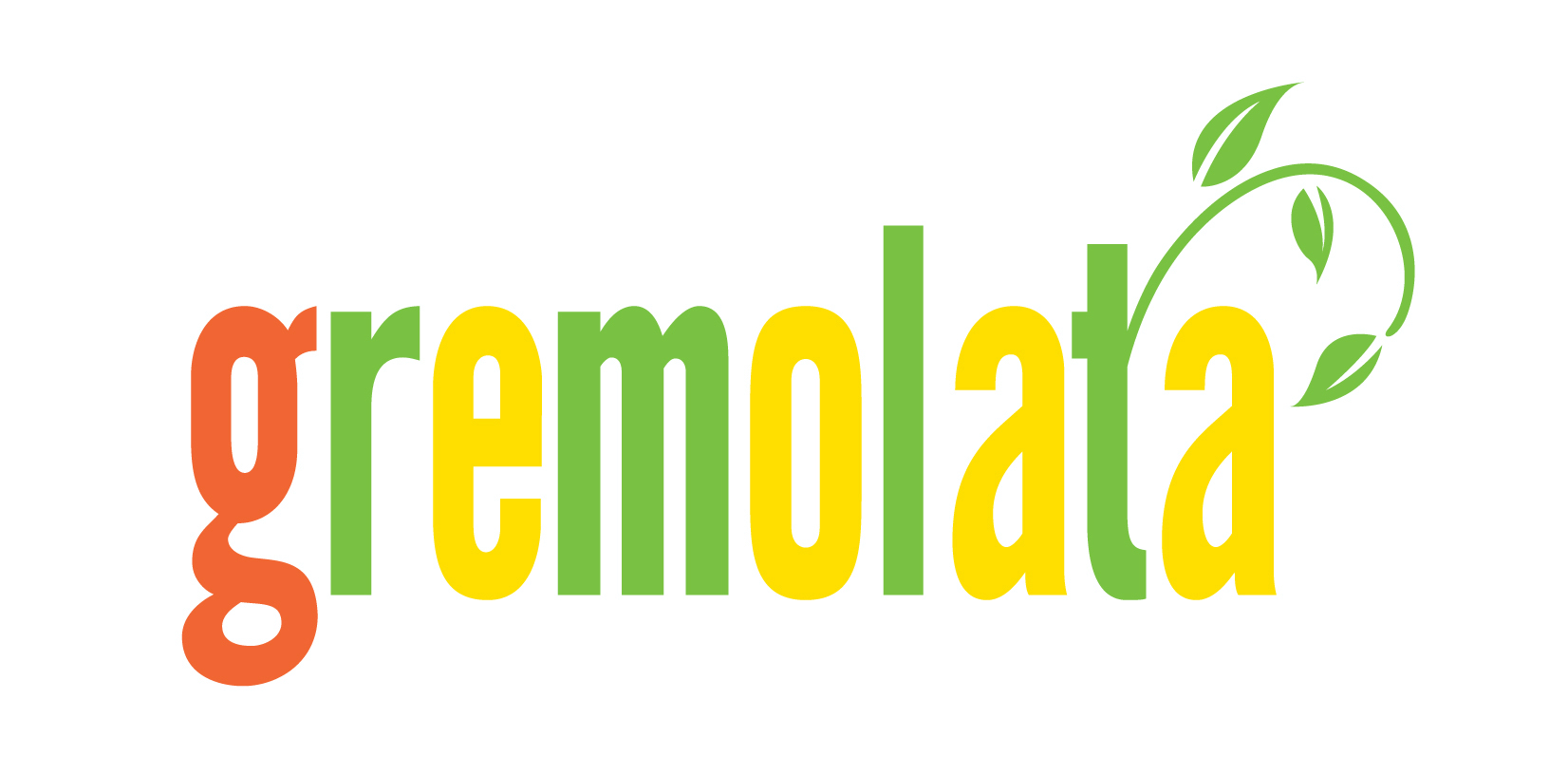
Jancis Robinson: My very first wine tasting was Ontario wine, in 1975.
Gremolata: You were an assistant editor for Wine & Spirit magazine, right? Did you take that job because you wanted to be in the wine world or the writing world?
JR: Wine. I became really interested in food and wine at university, but when I left in 1971, wine in Britain was considered utterly frivolous. It would have been seen as a waste of an Oxford education to fritter it a way on either wine or food. So I worked in travel for three years and then dropped out to Provence (not far from Peter Mayle’s – though he wasn’t there at the time). And of course, you only have to spend a minute in France to understand that eating and wine are what life is all about. So when I returned to London I was absolutely determined to find a job in wine or food – and it could have been food. It just so happened that a good job came up in wine.
G: Back to the first tasting: do you remember the wine? Was it Inniskillin? Was it any good?
JR: Don’t ask me. I mean I had nothing to compare it with. It was my first proper wine tasting.
G: How many tastings do you do a year?
JR: A year? Well, I taste a lot at home… But I do go to a lot them too… hmmm…
G: I get the impression that it’s a lot.
JR: Yes.
G: Do you have a system to remember or catalogue everything?
JR: Wouldn’t that be nice! Actually, for the last year or so, for the first time in my life, I’ve had a full time assistant, Julia Harding, who is wonderful. She’s a Master of Wine and an ex-publisher’s editor and a very good taster. But we communicate mostly by email. My dream would be to have a separate sort of hangar, or studio, at home with a slave in it unwrapping boxes of wine…
G: I guess you get sent a lot of wine. A lot of boxes delivered at your door.
JR: About two weeks ago I wrote an article pleading, “No more samples, please!” My children are having to move out: there’s no more room. Most of these samples are completely unsolicited. They’re pretty much all unsolicited. And typically arrive in all sorts of elaborate packaging that gives absolutely no clue about who sent them, or where to buy them or how much…
G: What do you get? Do they ever send you “critter wines”?
JR: The only time I get really basic wine is from one of the big retailers that dominate the British market. Generally, it’s more little known producers. And I have to feel sorry for them, because the market is so difficult and saturated. And I’ll often get an email four months later asking what I thought of their wine.
If I ever did get that slave, though, it would benefit the sender more than me. I will always take the trouble of tracking down a stunning wine.
G: Maybe you could get the supermarkets to sponsor a slave! The ‘Tesco Wine Slave’ or something.
JR: That’s right.
G: How often are you surprised by a new wine?
JR: Yes, yes. Of course, usually if I try a wine and think, this is really good, I’ll find out it’s $100 a bottle. Unfortunately there aren’t many really good surprises – though there are quite a few recently from Spain.
G: Are the $100 wines and the Grands Chateaux…
JR: They don’t send their wines, by the way.
G: That’s too bad. I meant to ask if they were worth it.
JR: Well, they’re worth it if people pay it, I suppose. And they are designed as much for investors as drinkers, which is rather unappetizing. It’s sad to see these wines, some of which are truly remarkable, slip into a zone where the only people who can afford to drink them are oligarchs and lucky wine writers.
G: I guess another way to ask this question is” are there small clos, or terroirs, that have the potential to reach that level. Of being as well received.
JR: Let’s leave the ‘well received’ out of it and just say ‘as good’ because a wine that doesn’t come from one these famous places will never be quite as well received or cost as much.
I suppose you could point to one part of France, which has only recently come into the spotlight: the Agly Valley, inland from Perpignan. It doesn’t even have its own name, which is extraordinary. It has a very strong local character and used to have its own vin de pays, but it hasn’t anymore. Sometimes the whole region is called Côtes de Catalan, but that’s the whole area, I’m talking about just a bit of it. There’s good schist there and wonderful old vines. The best wines are now about £20, and they’re very good wines by any measure.
G: Any others?
JR: I had a very good wine from Bergerac the other day. Made by an English Woman, Patricia Atkinson, who wrote a book called The Ripening Sun about her wine making. Well the 2003 Le Petit Prince, Clos de Vigne is, I think, under £8 a bottle and is absolutely stunning. Certainly up to lower class growth quality.
G: We should talk about [The Oxford Companion to Wine]. I was really surprised to learn that this is only the Third Edition and the First Edition was as recent as 1994. I assumed that Oxford had been at this for 50 or 60 years.
JR: No, no, no. I signed the contract in ’88.
G: So it took six years.
JR: Well, five. Five very panicky years of waking up in the middle of the night with 800 blank pages that had to be filled.
G: I hadn’t thought of that! I guess you commit to a thick book. You couldn’t come up with 100 pages and say, “this is all there is!”
JR: Exactly. Anyway, it hadn’t been done before and it wouldn’t have because of what I was saying before about the frivolity of wine, as it was perceived by the British public until quite recently.
G: That strikes me as odd because I think of the wine culture in Britain as being so much more developed.
JR: Yes, but that’s a very small and elite portion of the populace.
G: So in College at Oxford there would a wine cellar…
JR: But no books on wine on the shelves.
G: What does the project entail? I lost count of how many contributors…
JR: 167. Well at first we had to split up the world of wine in various themes like viticulture, grape varieties, people. And then come up with the topics. We found an oenology editor and a viticulture editors since those are very specialized fields. This time my assistant, Julia, had just got her Master of Wine so she was steeped on all the latest developments and did the vini and viti, which was great. So, then we look into the history, which is quite a distinguishing feature of the book. There are few one volume sweeps through the history of wine, but this has international experts in Greek vases waxing about, or Arab poetry – it’s fun. Oxford’s very good at pointing me to experts. Oh, and of course there’s the ‘fun’ entries. Things like the politics of wine, fashion and more abstract things.
G: What’s the fashion of wine?
JR: Not clothes, the fashions within wine.
G: Like sweet to dry?
JR: Yes. Certain grape varieties coming in and out of fashion. Like Chardonnay which was the height of fashion, believe it or not.
G: And there are lots of new entries this time.
JR: Absolutely. There are 300 substantive new entries, and 400 in total. 40% of the old entries have been substantially revised.
G: Do topics get culled?
JR: Oxford would only let us add 5% more pages. To make way for all the new material, since the wine world has changed so much in just six years, something had to go. So we cut out all the stuff on brandy and spirits – it was the logical thing to do.
G: They can come up with a companion to brandy. In the 30 years that you’ve been involved in this world of wine, have things got better?
JR: Oh, yes. Over all: much, much better. And not least because there are so many more people interested in wine. Especially the producers. It used to be that you’d look for the hot new area. Now the question is more like “where aren’t they improving their wine with every vintage?” It’s so competitive. There a whole new generation of producers (not necessarily young) who are just completely mad and fired by enthusiasm. There aren’t many people making wine for money. They just love the idea of making great wine. And we all benefit. With the world wide glut and globalization, we’re being offered better and better value all the time.
G: Even though the ’06 Bordeaux prices are sky high?
JR:: Yes, it’s ironic. At the moment, the objective quality gap between the worst wine and the best wine is narrower than it’s ever been, whereas the price gap is wider than it’s ever been.
G: And that’s OK?
JR: Yes because there’s so much good stuff in the middle. I’m not sure what the Canadian equivalent is but in Britain in the £8 to £15 range there are some absolutely stunning wines.
G: And what about high-octane, high alcohol wines. I know you’ve written despairingly about this.
JR: I think and hope that might be changing. I’ve seen various pendulums swing in my (ahem) long tenure and I think we may have got to the end of that. All the consumers I talk to say they don’t want high alcohol, they find it inconvenient. I hope the producers are listening . There seems to be this phobia about wines whose tannins aren’t completely soft and subtle when they’re young. But wines are supposed to be a little crunchy when young. If you pick a little bit earlier, it’s not a disaster. It’s nice to have a little bit of refreshing natural acidity and a little bit of chew from some tannins.
I think wine’s number one job is to refresh us. We’ve got food to nourish us and I don’t want a wine that needs a knife and fork. I want something that compliments food and makes it appetizing.
* * *
Check out Jamie’s 2011 video interview with Jancis Robinson for GFR, from the basement cellar at Fortnum and Mason here.

